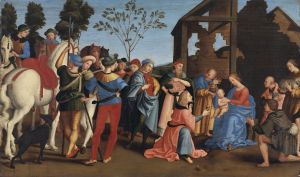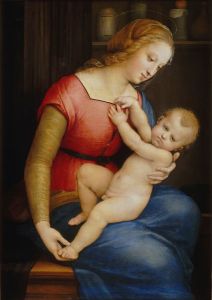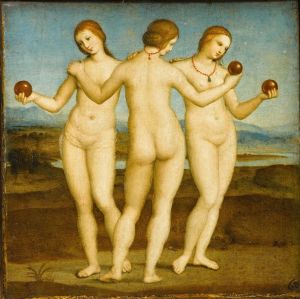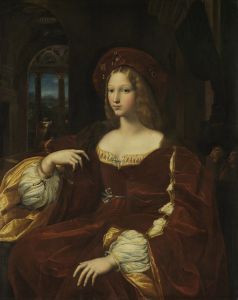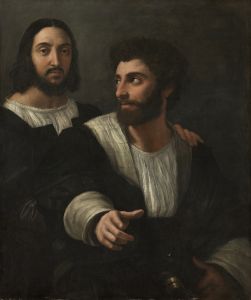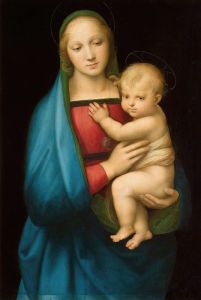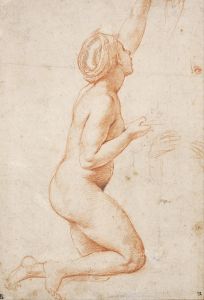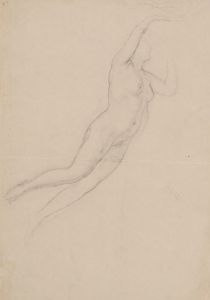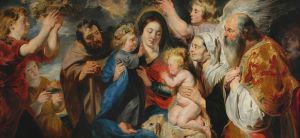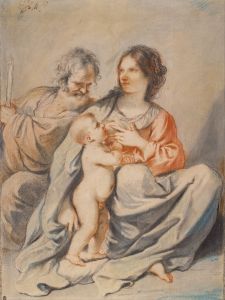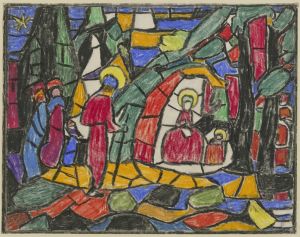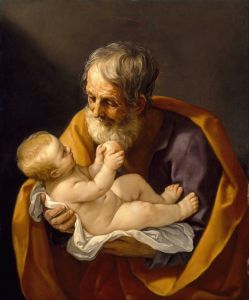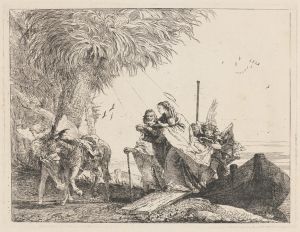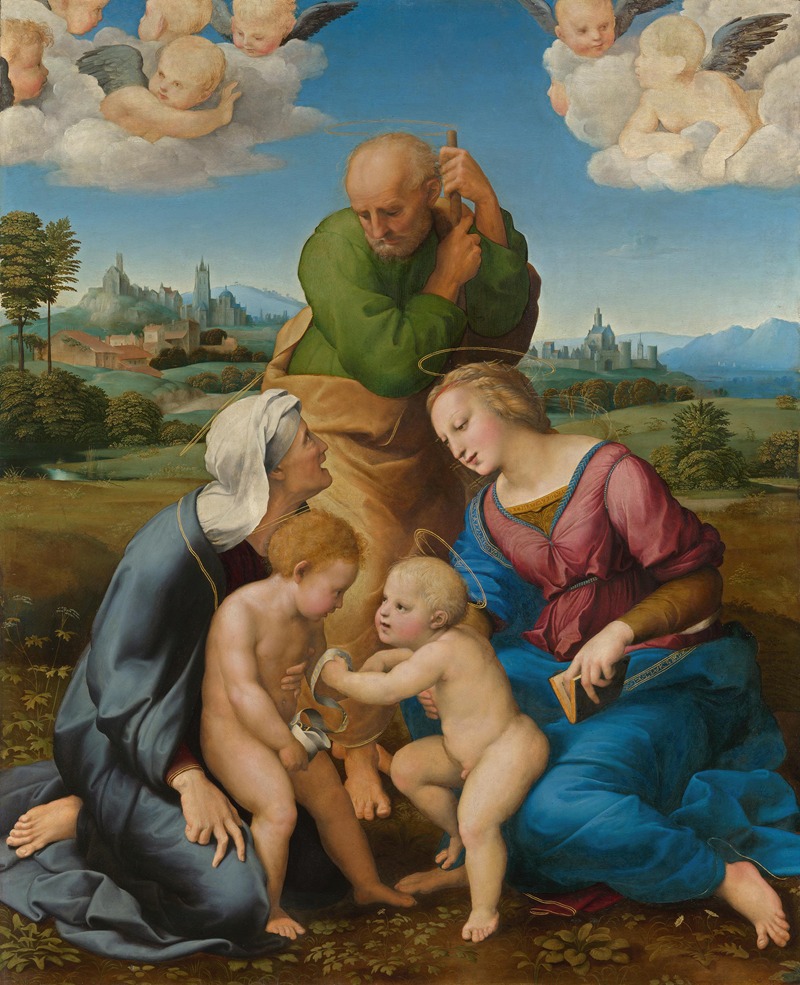
Canigiani Holy Family
A hand-painted replica of Raphael’s masterpiece Canigiani Holy Family, meticulously crafted by professional artists to capture the true essence of the original. Each piece is created with museum-quality canvas and rare mineral pigments, carefully painted by experienced artists with delicate brushstrokes and rich, layered colors to perfectly recreate the texture of the original artwork. Unlike machine-printed reproductions, this hand-painted version brings the painting to life, infused with the artist’s emotions and skill in every stroke. Whether for personal collection or home decoration, it instantly elevates the artistic atmosphere of any space.
The "Canigiani Holy Family" is a renowned painting by the Italian High Renaissance artist Raphael, created around 1507-1508. This artwork is an exemplary representation of Raphael's mastery in composition, color, and depiction of religious subjects, which were central themes in his oeuvre. The painting is housed in the Alte Pinakothek, a prominent art museum located in Munich, Germany.
The painting depicts the Holy Family, a common subject in Christian art, which includes the Virgin Mary, Saint Joseph, the Christ Child, and Saint Elizabeth with the infant Saint John the Baptist. Raphael's portrayal of these figures is characterized by a harmonious composition and a serene, balanced arrangement that reflects the artist's deep understanding of spatial dynamics and human anatomy.
In the "Canigiani Holy Family," Raphael employs a pyramidal composition, a technique that was popular during the Renaissance for its ability to create a sense of stability and focus within the artwork. The figures are arranged in a way that guides the viewer's eye through the scene, with the Virgin Mary and the Christ Child at the center, symbolizing their importance. Saint Joseph and Saint Elizabeth are positioned on either side, engaging with the central figures in a manner that suggests a familial bond and spiritual connection.
Raphael's use of color in this painting is notable for its vibrancy and subtlety. The artist skillfully employs a palette that enhances the naturalism of the scene while also imbuing it with a sense of divine grace. The delicate interplay of light and shadow further adds to the painting's depth and realism, showcasing Raphael's ability to create lifelike textures and forms.
The "Canigiani Holy Family" is also significant for its depiction of emotional expressions and interactions among the figures. Raphael captures a moment of tender intimacy and affection, as the figures gaze at one another with expressions of love and reverence. This emotional depth is a hallmark of Raphael's work and contributes to the painting's enduring appeal.
The painting was commissioned by the Canigiani family, a prominent Florentine family, which is how it acquired its name. The Canigiani family was known for their patronage of the arts, and commissioning a work from Raphael would have been a testament to their status and appreciation for high-quality art.
Raphael's influence on the art world was profound, and the "Canigiani Holy Family" is a testament to his skill and innovation. His ability to blend classical ideals with naturalistic detail set a standard for future generations of artists. This painting, like many of Raphael's works, exemplifies the harmonious balance and clarity that define the High Renaissance style.
In summary, the "Canigiani Holy Family" is a masterpiece that reflects Raphael's artistic genius and his contribution to the development of Renaissance art. Its composition, use of color, and emotional resonance make it a significant work in the history of art, admired by scholars and art enthusiasts alike.





